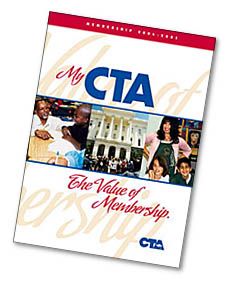Why CalSTRS fix is impossible: It would force cut in teacher take-home pay

 The California State Teachers’ Retirement System is terribly underfunded. The last official report put its shortfall at $74 billion. State officials say it needs an infusion of $4 billion more money a year for decades to come.
The California State Teachers’ Retirement System is terribly underfunded. The last official report put its shortfall at $74 billion. State officials say it needs an infusion of $4 billion more money a year for decades to come.
This week, as reported by Cal Watchdog founding editor Steve Greenhut in his U-T San Diego column, CalSTRS came forward with a proposal to jump-start discussions on how to fix the funding problem. Officials floated …
“… a ‘hypotethetical’ plan that would allow them to increase the amount of money they collect from teachers to reduce the pension debt. In exchange for that give-back from teachers, CalSTRS would guarantee a 2 percent cost-of-living adjustment every year. Currently, retirees receive that annual boost – but it is not a ‘vested’ right. The Legislature can take it away any time that it chooses.
“Because of state law, CalSTRS must gain legislative approval for any new dollars it seeks. …
“CalSTRS explains in its legal analysis that public employees cannot have their vested benefits reduced unless they receive a ‘comparable new advantage.’ So these pension-fund officials are arguing that ‘vesting’ the annual boost — making it a guarantee rather than an option — is an advantage that more than offsets the contribution increases. They provided legislators with a complicated actuarial formula backing that point.
“It’s a clever effort by CalSTRS to find some way to gin up the struggling system’s funding levels given a legal and political situation that offers few cost-saving options. But it could cost more than it gets in return.”
Usual approach to pension reform involves concessions
 Steve makes a strong case that this is a “fix” that could make current problems worse.
Steve makes a strong case that this is a “fix” that could make current problems worse.
But I have an additional, more unconventional thesis: There is no way to reconcile deeply held beliefs among some of the various “stakeholders” here. It’s impossible to imagine a compromise that the 500,000-plus members of the California Teachers Association and the California Federation of Teachers would find remotely acceptable.
Under the funding formula written in state law, teachers’ employers pay a sum equal to 8.25 percent of their pay toward pension costs; teachers contribute 8 percent of their pay; and the state contributes in two ways to the cost. As of 2015, per Calpensions.com’s Ed Mendel, the state contribution will be equal to 6 percent of pay.
But 22.25 percent of pay isn’t nearly enough to cover CalSTRS’ liabilities. A 2012 analysis suggested between 36 percent and 37 percent of pay is needed to cover “normal” costs of retirement for veteran teachers.
So where do we go from here?
In California, in recent years, we’ve established a framework for stabilizing underfunded pensions: Both governments and employees contribute significantly more toward pensions, and new hires get less generous benefits.
Are some unions more equal than others?
Two of those three things could easily happen in Sacramento. Even Republican lawmakers have long since acknowledged the state needs to pay more to shore up CalSTRS. And veteran teachers would make a show of indignation about a change that the Maviglians of the world would depict as throwing young teachers under the bus, then go along with it.
But the third thing — the significant increase in teacher contributions — is about as likely to happen as Cruz Bustamante making a triumphant return to statewide office. This would mean a significant drop in take-home pay. The CTA and CFT won’t stand for that.
Remember, the easiest way to understand how Sacramento works is to begin with the presumption that the no. 1 priority of elected Democrats is protecting union teachers.
Example: The complicated change in education funding known as the “Local Control Funding Formula” was adopted last year by the Legislature in shockingly quick fashion. It sharply limited the state mandates on how local districts must spend their funds so officials could ensure more money went to help English-learners and the most academically challenged. But depending on the follow-through, the eliminating of those mandates could have as its primary effect freeing up money to compensate teachers — not helping struggling students. Why else would the bill have passed as quickly?
If the CTA and CFT are that ruthless and Machiavellian — and they are, they are — there is no way they’ll go along with a cut in teacher take-home pay.
Even if other public employee unions have accepted pension reforms that made the same concession.
Related Articles
CalWatchdog Morning Read – November 11
Parole measure’s success depends on CA Department of Corrections and Rehabilitation Issa claims victory with votes still being counted Measure
Using soldiers as props
Jan. 15, 2010 By now most people are probably tired of hearing about Gov. Arnold Schwarzenegger’s Jan. 6 State of
Skelton Right on Initiative Reform
John Seiler: I was so shocked this morning when I saw George Skelton’s column that I had to read it



